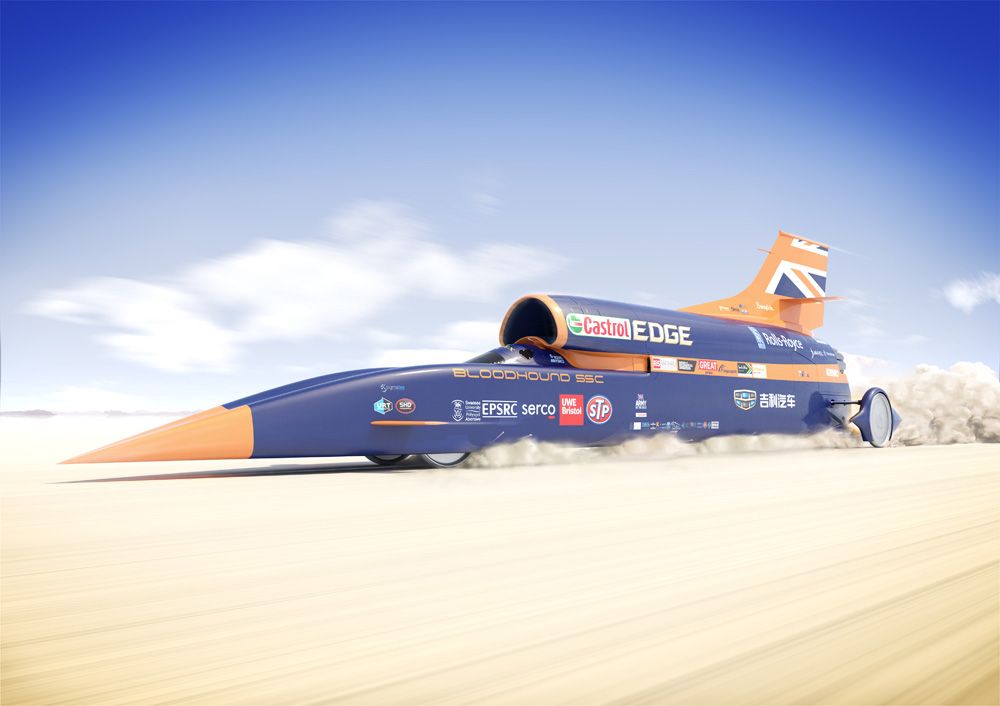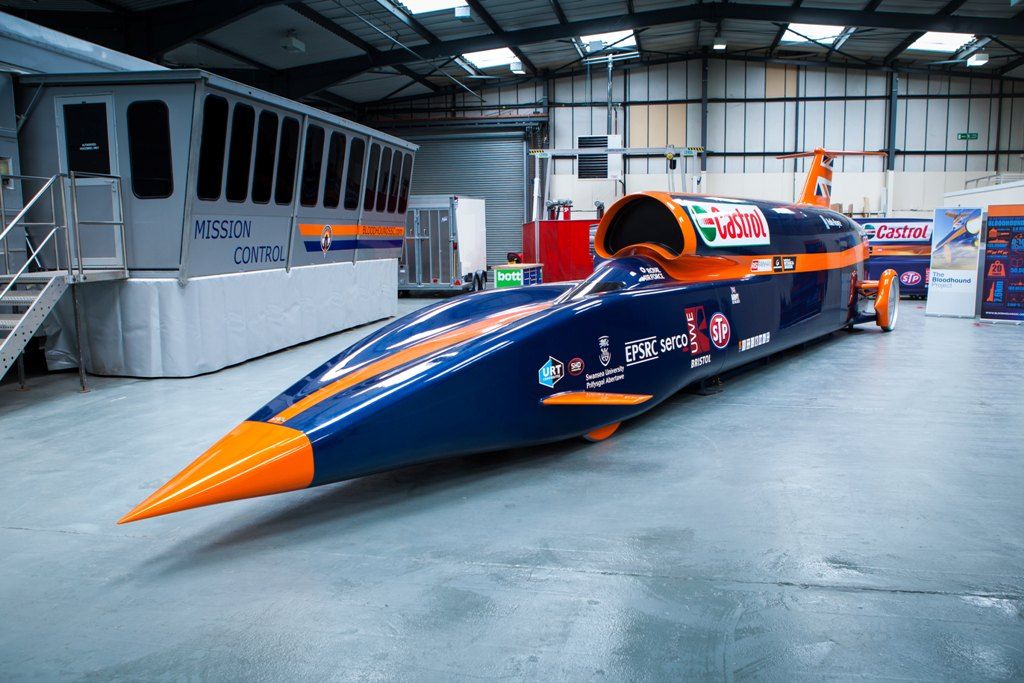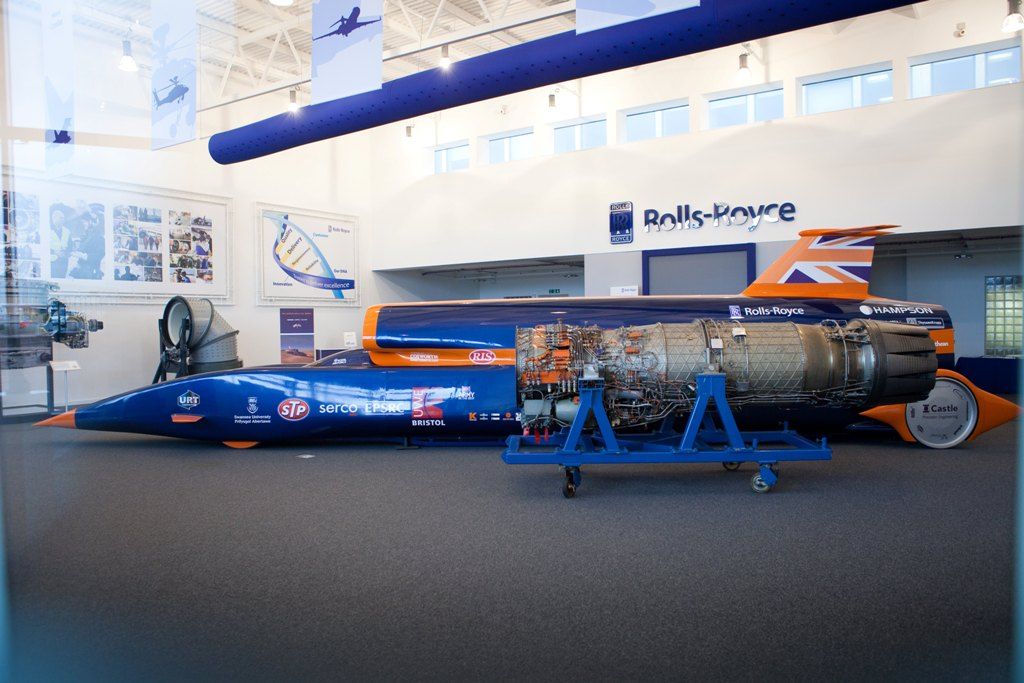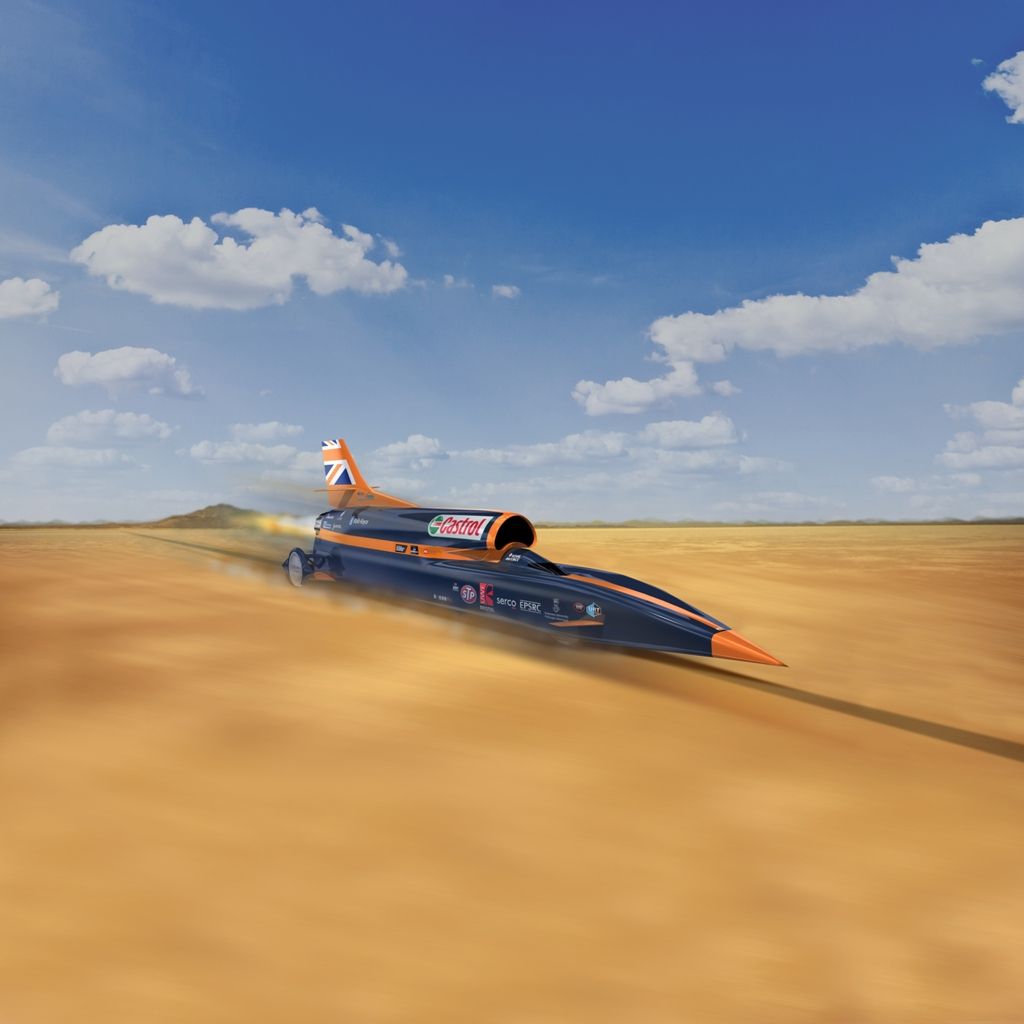It’s been a long, arduous journey so far, with numerous setbacks along the way, but it’s looking like the Bloodhound SSC jet/rocket car will finally get to show what it’s made of next year.
Continue reading for the full story.
The Full Story
First announced in October of 2008, the Bloodhound SSC project is, to put it lightly, a major undertaking. Designed to either match or exceed the 1,000-mph mark, the team behind the Bloodhound SSC aim to break the current land speed record by a massive 33 percent, the largest ever margin. To accomplish that amazing feet, the car comes equipped with both a Rolls-Royce Eurojet EJ200 afterburning jet engine and a Nammo HTP hybrid rocket, not to mention a V-8 from Jaguar Land Rover acting as the HTP pump.
In the decade or so since the British-built land speed record seeker was first announced, the team behind it has worked steadily towards accomplishing its stated goal, but has faced multiple setbacks in the process, from technical issues to lack of funding.
However, it looks as though things are finally coming together for the Bloodhound team. So far, the car has managed to eclipse the 200-mph mark, and its first shot at 500 mph is planned for 2019. If all goes according to plan, it’ll shoot for that magic 1,000-mph run in 2020.
Obviously, a feat such as that requires the right track. As such, the Bloodhound will take to the desert of South Africa’s Northern Cape, where it will hopefully hit 500 mph by the end of next year.
According to Autocar, the 500-mph run will be a major milestone for the project, as at that speed, the aero starts to make all the difference in keeping the car grounded. As a result, it could become unstable as the speed rises.
Responsible for wrangling the machine will be Andy Green, the current land speed record holder and Wing Commander with the RAF. Green set the standing record of 763.065 mph back in 1997 at the helm of the Bloodhound’s predecessor, the Thrust SSC jet-propelled car.
To make the upcoming 500-mph run, the Bloodhound team will designate as many as 50 test tracks out in the desert. Each will be used only once, as the muddy surface of the dried lake bed will apparently get rutted with each run. According to Autocar, the track prep also involved the removal of 16,000 tons of rocks, making for the largest land clearance ever undertaken for a motorsport event.
The upcoming test runs will also be the first time the car’s 35-inch aluminum wheels will be put to use. The wheels are designed to rise up and out of the surface mud and “plane” along the ground at 500 mph, spinning at an incredible 10,2000 rpm. At that velocity, traditional wheels would disintegrate from the centrifugal force.
The run should provide a bevy of data, which will then be sent for analysis by various education institutions worldwide.
If the 500-mph run goes off without a hitch, the Bloodhound team will prep for the 1,000-mph run by adding extra rockets to the vehicle. With each candle lit, the car will make upwards of 20 metric tons of thrust.
It’s all rather mind-boggling to think about, and when you consider the challenge the Bloodhound team is facing, it’s not surprising its taken this long to get everything up and running. We can’t wait to see what this thing will do.
Autocar0}
Check out our full review of the (hopefully) insanely fast Bloodhound SSC}




